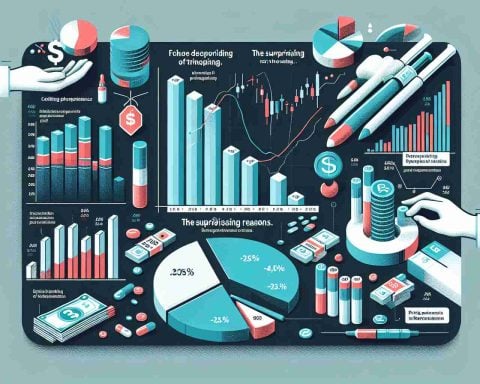- Trump’s executive orders may dramatically reduce EV market share, with predictions of a 28% decline by 2030.
- The elimination of the $7,500 tax credit could limit consumer interest and squeeze EV sales from 32% to 23% of the market.
- California’s zero-emission mandates may be significantly impacted, leading to fewer eco-friendly vehicle options.
- The U.S. Postal Service’s electrification plans are jeopardized as contract cancellations threaten previous investments.
- Biden’s goal of 500,000 operational charging stations by 2030 faces obstacles with potential funding freezes.
- Increased import tariffs on battery components could lead to rising costs, pushing consumers back towards gasoline vehicles.
The automotive landscape is shifting dramatically as President Trump’s sweeping executive orders threaten to reshape the future of electric vehicles (EVs) in America. With plans to slash vital subsidies for EV purchases and charging infrastructure, analysts warn that EV market share may plummet by a staggering 28% by 2030.
Imagine cruising down the highway in a sleek electric car—now imagine rising costs making that dream out of reach. Trump’s directives could eliminate the $7,500 tax credit that has fueled consumer interest, effectively squeezing EV sales from a hopeful 32% of the market down to a mere 23%. States like California, known for their ambitious zero-emission mandates, would feel the brunt of these changes, potentially erasing crucial sales measures and leaving residents with fewer eco-friendly options.
But the impact doesn’t stop there. The U.S. Postal Service’s ambitious plan to electrify its fleet, originally buoyed by a $3 billion investment, faces uncertainty as contract cancellations loom. Meanwhile, the budget for EV charging infrastructure could be put on hold, jeopardizing Biden’s vision of 500,000 charging stations by 2030, with only a handful even operational to date.
With potential import tariffs on crucial battery components sourced mainly from China, as prices could soar by 29%, the dire forecast includes rising EV costs that may drive consumers back to traditional gas guzzlers.
The key takeaway? Trump’s energy policies pose a serious threat to the EV revolution, risking not just increased prices but also stalling progress toward a cleaner, sustainable future. Brace yourself—strong winds are ahead in the battle for a greener tomorrow.
Is the Electric Vehicle Revolution Under Siege? What You Need to Know!
The Evolving Landscape of Electric Vehicles
The automotive industry is currently facing tremendous changes, particularly with the stance of the U.S. government concerning electric vehicles (EVs). While previous administrations have pushed for aggressive adoption of EVs, recent developments indicate a pivotal shift that may reshape the market dynamics significantly. Industry experts point to several aspects that could potentially derail the progress of electric vehicles in the United States.
# Key Features and Innovations in the EV Market
– Battery Technology Advances: Ongoing research into solid-state batteries promises to enhance safety, energy density, and charging time. These innovations could make EVs more appealing despite policy shifts.
– Automaker Commitments: Many major manufacturers, including Ford and General Motors, have committed billions of dollars towards electric vehicle technology, which may not change despite government policies. Their strategies include expanding model ranges and improving battery performance.
– Consumer Awareness and Trends: There is a growing consumer preference for sustainability, with an increasing number of buyers willing to pay a premium for eco-friendly vehicles. This trend may sustain demand for EVs despite potential policy impacts.
# Limitations and Concerns
– Infrastructure Challenges: Without continued investment in charging infrastructure, the feasibility of owning an EV diminishes, particularly in urban areas where charging stations are sparse. This could disproportionately affect low-income and rural areas.
– Cost Factors: Should tariffs be imposed on EV components, the resulting price hikes could hinder widespread adoption. Analysts note that the average cost of EVs could rise significantly, potentially reversing the current annual price reductions seen in battery technology.
# Pricing and Market Forecasts
– Market Forecasts: Analysts predict that without support from subsidies and infrastructure investments, the market share for EVs could dip substantially. Projections suggest a decrease from 32% to as low as 23% by 2030, which would mark a significant downturn for an industry poised for growth.
– Financial Implications: The potential removal of tax credits worth $7,500 for consumers could deter many from purchasing EVs. Further, the rising costs of battery production due to tariffs could increase overall vehicle prices.
Major Questions Answered
1. How will Trump’s energy policies impact state-specific EV initiatives?
– Trump’s directives could undermine ambitious state programs, particularly in California, which partially relies on federal support for its zero-emission mandates.
2. What are the implications of delays in EV charging infrastructure?
– The postponement of budgets for charging stations jeopardizes the feasibility of owning an EV, potentially leading to range anxiety among consumers and undermining sales.
3. Is there a viable path forward for EV adoption despite potential setbacks?
– Yes, automakers are forging ahead with innovations and investments. Additionally, consumer interest in sustainable options might sustain demand even in the face of policy challenges.
For more insightful information on electric vehicles, visit Energy.gov to stay abreast with the latest developments and policies affecting the EV market.











